Has a problem been found?

Repair as necessary and go to "Verification of Vehicle Repair" procedure.

Go to " Power Circuit Inspection " procedure.
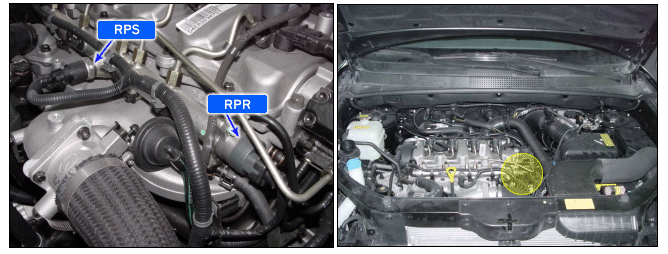
The FPR (Fuel Pressure Regulator) sets the correct pressure in the rail as a function of engine, loading and maintains it at this level.
If the rail pressure is excessive, the pressure control valve opens and a portion of the fuel returns from the rail to the fuel tank via a collector line.
If the rail pressure is too low, the pressure control valve closes and seals off the high pressurestage from the low pressure stage.
In case of the fuel pressure regulator failure, the engine symptoms will occur the shut down and the starting impossible.
If the FPR circuit generates threshold value, the ECM judged this as a fault and DTC is set.
Item | Detecting Condition | Possible Cause |
DTC Strategy | ● Circuit continuity check | ● Shrt to battery in power circuit ● Short to battery in control circuit ● Faulty FPR ● Faulty ECM |
Enable Conditions | ● Engine run | |
Threshold Value | ● Short for fuel pressure regulator circuit. | |
Diagnostic Time | ● 0.3 sec. | |
MIL Fuel Limit Fuel Cut EGR Off | ● Yes ● No ● Yes ● No |
Fuel Pressure Regulator | |
Resistance | 2.07 ~ 2.53 Ω at 20°C |

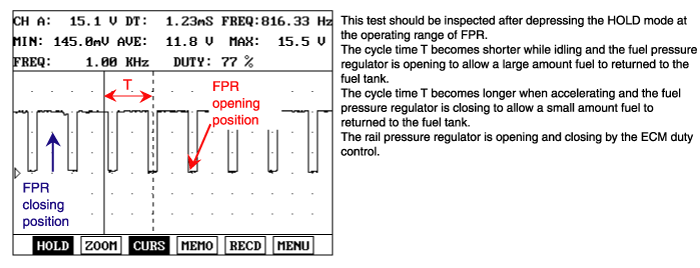
Connect scantool to Data Link Cable (DLC).
Warm up engine to normal operating temperature.
Monitor that " Fuel Pressure and Fuel Pressure Regulator " parameter on the scantool.
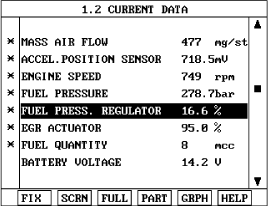
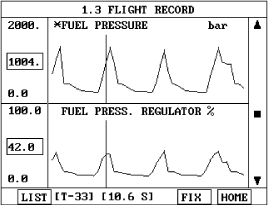
Fig 1) Normal value with fuel pressure and pressure regulator at idle.
Fig 2) Normal value with fuel pressure and engine speed while accelerating and decelerating.
Is the Current data displayed correctly ?

▶ Fault is intermittent caused by poor contact in the sensor’s and/or ECM’s connector or was repaired and ECM memory was not cleared. Thoroughly check connectors for looseness, poor connection, bending, corrosion, contamination, deterioration, or damage. Repair or replace as necessary and go to "Verification vehicle Repair" procedure.

▶ Go to "W/Harness Inspection" procedure.
Many malfunctions in the electrical system are caused by poor harness and terminals.
Faults can also be caused by interference from other electrical systems, and mechanical or chemical damage.
Thoroughly check connectors for looseness, poor connection, bending, corrosion, contamination, deterioration, or damage.
Has a problem been found?

Repair as necessary and go to "Verification of Vehicle Repair" procedure.

Go to " Power Circuit Inspection " procedure.
Ignition "OFF" & Engine "OFF".
Disconnect Rail Pressure regulator connector.
Ignition "ON" & Engine "OFF".
Measure voltage between terminal 1 of the rail pressure regulator harness connector and chassis ground.
Specification : Approx. 11.5 ~ 13.5V
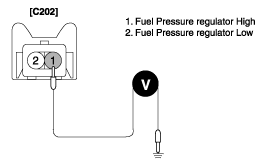
Is the measured voltage within specifications ?

▶ Go to " Control Circuit Inspection" procedure.

▶ Check for short to battery in the power harness.
Repair as necessary and go to "Verification of Vehicle Repair" procedure.
Check for short to battery in harness.
Ignition "OFF".
Disconnect Rail pressure regulator connector.
Measure voltage between terminal 2 of rail pressure regulator harness connector and chassis ground.
Specification : Approx. below 1V
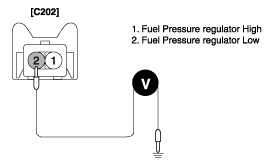
Is the measured voltage within specifications ?

▶ Go to " Component Inspection " procedure.

▶ Check for short to battery in ground harness.
Repair as necessary and go to "Verification of Vehicle Repair" procedure.
Check Rail Pressure Regulator.
Ignition "OFF".
Disconnect Rail Pressure Regulator.
Measure resistance between terminal 1 and 2 of rail preussure regulator connecor(Component side).
Specification : 2.07 ~ 2.53 Ω (20°C)

Is the measured resistance within specifications ?

▶ Go to " Check regulating pressure " as below.

▶ Substitute with a known-good rail pressure regulator and check for proper operation.
If the problem is corrected, replace rail pressure regulator and then go to "Verification of Vehicle Repair" procedure.
Check regulating pressure.
Ignition "ON" & Engine "ON".
Monitor signal waveform or graph function of current data by connecting scantool at terminal 2 of Rail preussure regulator.
Ignition "OFF" then Igintion "ON" before Main relay OFF.
If Main relay OFF, Monitoring current data is impossible. Because Sensor power is cut and communication between scantool and ECM is off.
This test should be done without any leakage from injector nozzle, return line and high pressure line.
Scopemeter | Scantool |
Voltage for rail pressure sensor at idle keep up 1.2V ~ 1.4V. Then, the voltage will drop to 0.7V at the point of Key off. Finally Signal waveform shows that voltage is getting slow down. | Pressure detected by Rail pressure sensor keep up 250bar at idle. Then, Pressure will drop rapidly upto 100bar at the point of key off. Finally, Graph shows that pressure is getting slow down. |
Does the measured pressure drop rapidly upto 100bar after Key OFF ?

▶ Substitute with a known-good rail pressure regulator and check for proper operation.
If the problem is corrected, replace rail pressure regulator and then go to "Verification of Vehicle Repair" procedure.

▶ Substitute with a known-good ECM and check for proper operation.
If the problem is corrected, replace ECM and then go to "Verification of Vehicle Repair" procedure.
After a repair, it is essential to verify that the fault has been corrected.
Connect scan tool and select "Diagnostic Trouble Codes(DTCs)" mode and then clear DTC.
Operate the vehicle within DTC Enable conditions in General information.
Are any DTCs present ?

Go to the applicable troubleshooting procedure.

System is performing to specification at this time.